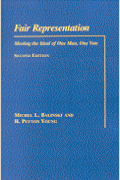The objectives of this project were to conduct a comprehensive study of social influences on smoking behavior using an agent-based modeling approach. The results of the research can be divided into three parts. The first part was devoted to understanding the physiological and psychological bases of nicotine addiction in order to integrate them into the model. This work is summarized in two papers, “Social Influence, Reactance, and Tobacco,” by Ross Hammond, and “Addiction and Cessation Functions in the Agent-Based Smoking Model” by Zirui Song. The second part of the research involved a statistical analysis of social network structures among teenagers, which function as conduits for initially taking up smoking and also for quitting based on targeted interventions. These findings are reported in the paper “How to Form a Network of Junior High School Students,” by Ben Klemens, and form an integral part of the computer models described below.
The third and principal component of the research was to construct agent-based computer models that can be used to simulate the impact of various types of policy interventions. This work was carried out by Robert Axtell, Joshua Epstein, Ross Jon Parker, and Peyton Young. The project produced two models that are designed to study different types of effects.










